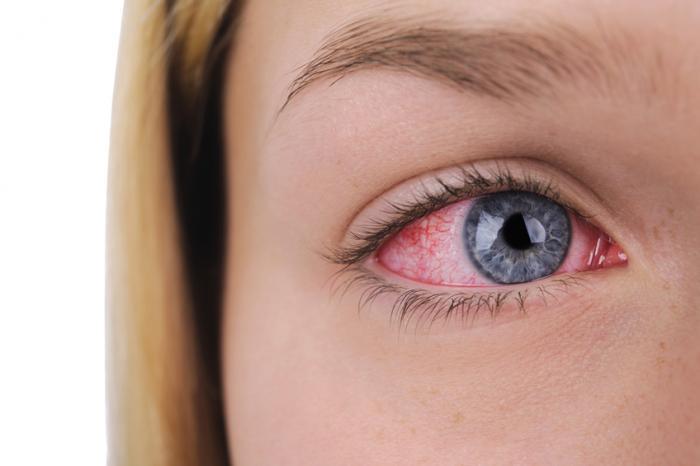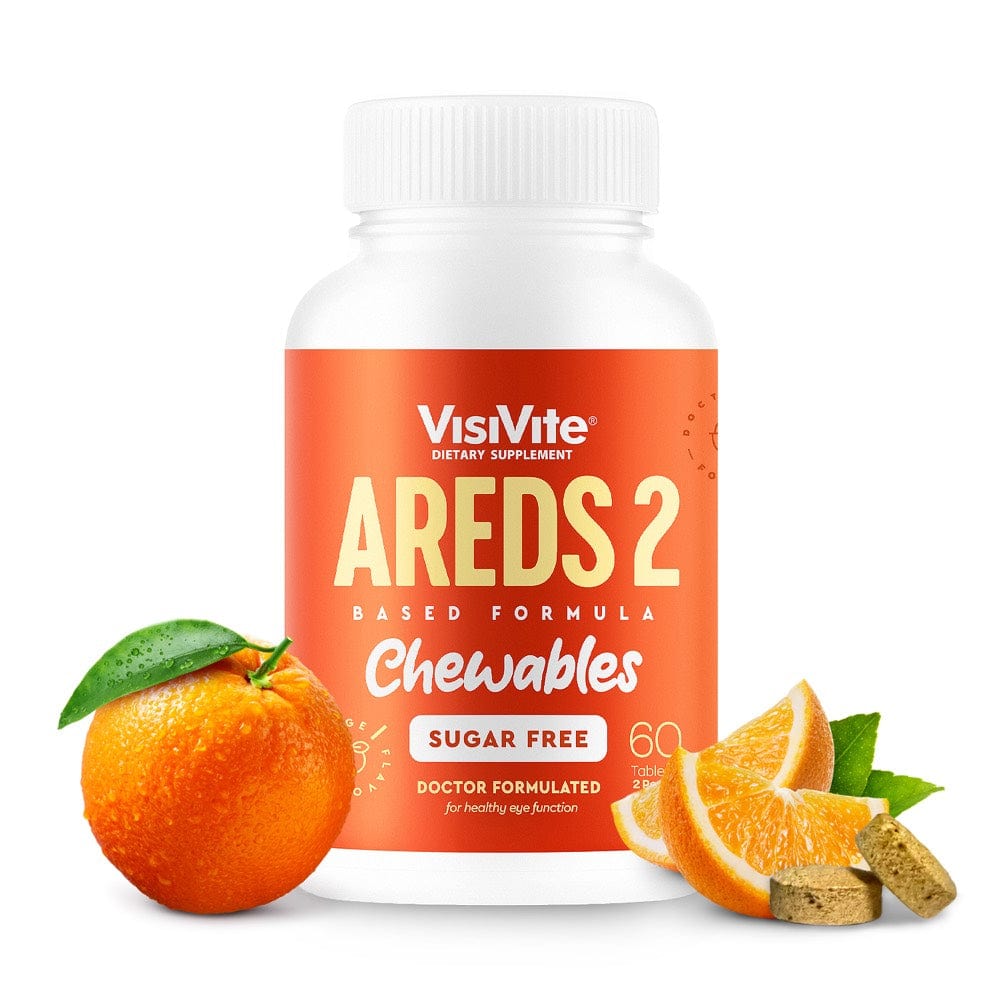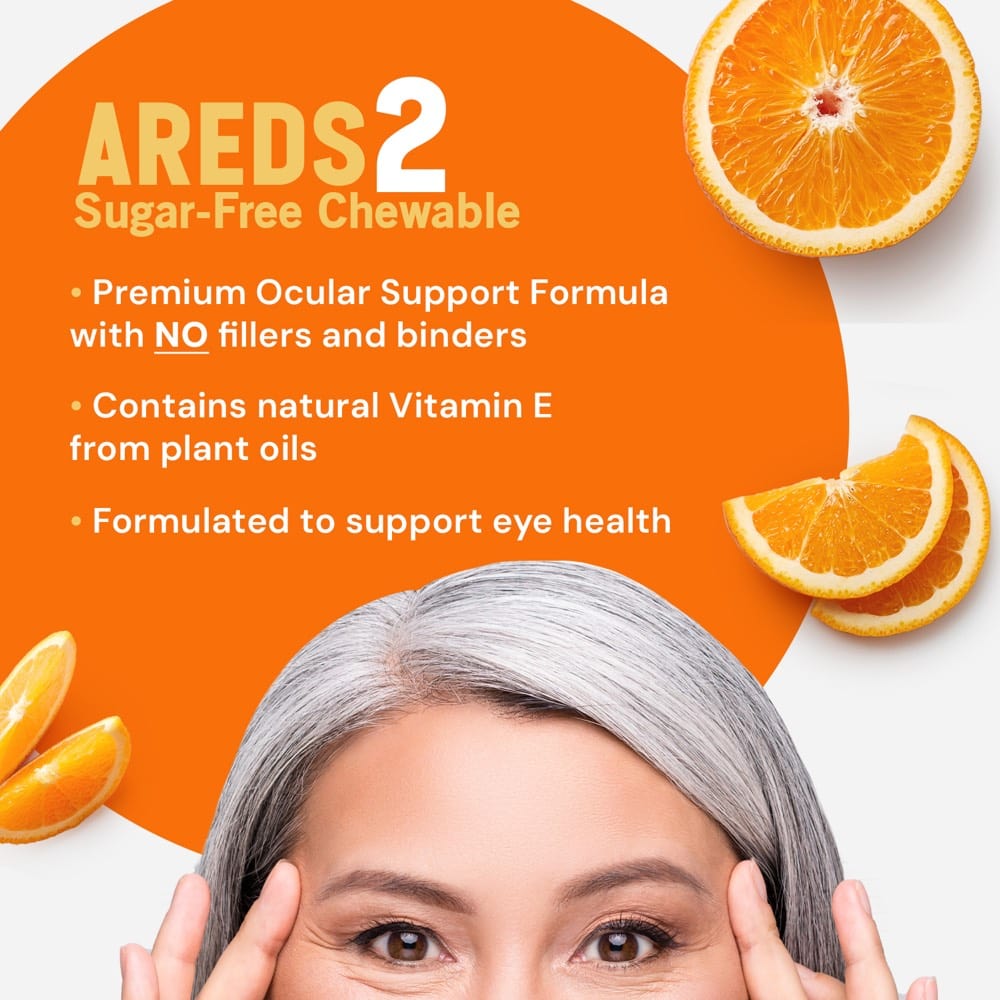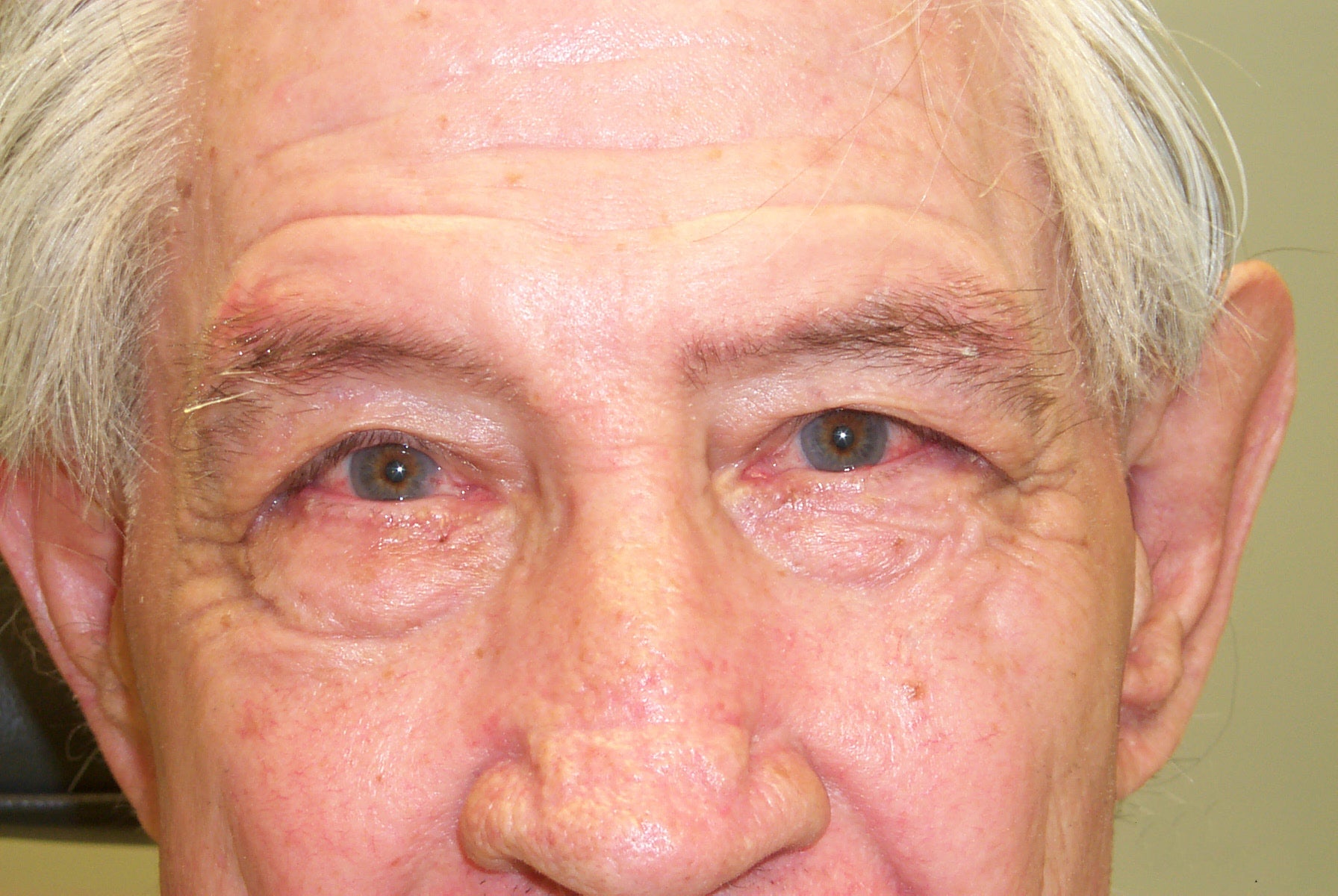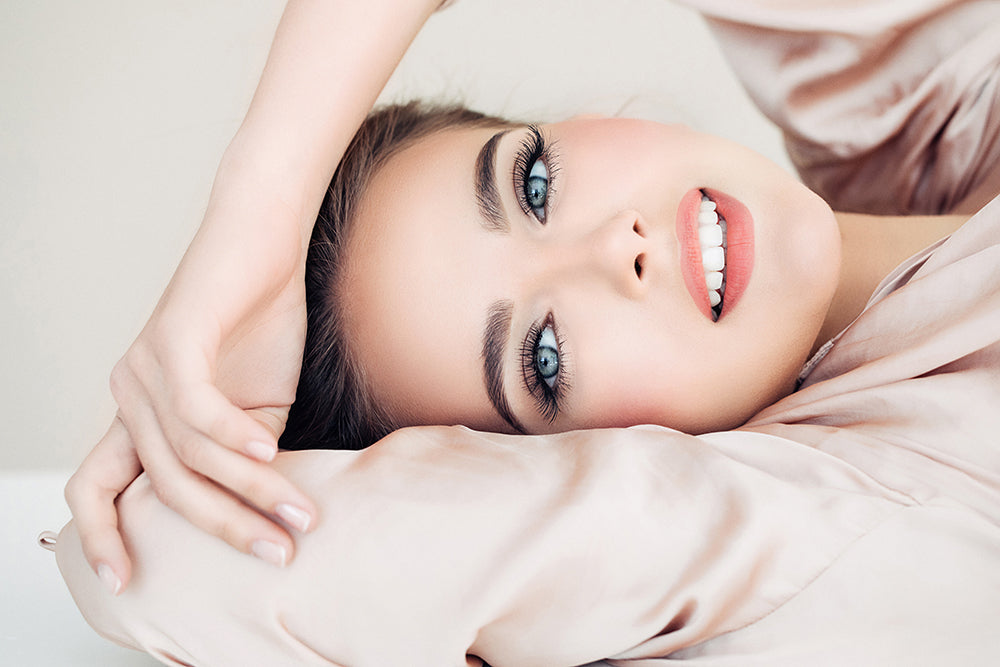Dry eye syndrome, also known as keratoconjunctivitis sicca, is one of the most common problems treated by eye physicians. In the U.S., about six million women and three million men have moderate or severe symptoms of dry eye syndrome, and it is estimated that an additional 20 to 30 million people have mild cases of dry eye syndrome. Dry eye’s prevalence increases with age, so that it is extremely common in older people, especially women.
 Dry eye syndrome is a chronic lack of sufficient lubrication and moisture in the eye. To help keep the eyes comfortable and vision optimal, a normal, thin film of tears coats the eyes. This tear film is made up of three distinct layers that are critical to a normal tear film. The tear film consists of an inner mucous layer against the eye, a middle aqueous (water) layer, and an outer lipid (oily) layer. If any of the three layers of the tear film are deficient, the eye may suffer symptoms of dry eye.
Dry eye syndrome is a chronic lack of sufficient lubrication and moisture in the eye. To help keep the eyes comfortable and vision optimal, a normal, thin film of tears coats the eyes. This tear film is made up of three distinct layers that are critical to a normal tear film. The tear film consists of an inner mucous layer against the eye, a middle aqueous (water) layer, and an outer lipid (oily) layer. If any of the three layers of the tear film are deficient, the eye may suffer symptoms of dry eye.
Dry Eye Syndrome Symptoms and Signs
In case of dry eye, the following symptoms maybe experienced:
- Eye pain
- Excessive tearing
- Dry, gritty, scratchy, or filmy feeling
- Burning or itching
- Redness
- Blurred vision
- Foreign body sensation
- Light sensitivity
If you routinely experience any of the above symptoms, it is recommended that you see your eye care specialist.
Causes of Dry Eye :
Tears bathe the eye, washing out dust and debris and keeping the eye moist. They also contain enzymes that neutralize the microorganisms that colonize the eye. Tears are essential for good eye health.
There are certain factors that contribute to Dry Eye Syndrome, although both men and women of any age may experience it :
Aging: Advancing age is the single most important risk factor for Dry Eye. Dry Eye Syndrome affects 75% of the population over the age of sixty-five years.
Women: Hormonal changes brought on by pregnancy, lactation, oral contraceptives, menstruation, and post-menopause can cause Dry Eye conditions.
Disease: Several diseases result in side affects of Dry Eye Syndrome: Rheumatoid Arthritis, Diabetes, Thyroid Abnormalities, Asthma, Cataracts, Glaucoma, Lupus.
Medication: Certain medications can decrease the body’s ability to produce lubricating tears: Antidepressants, decongestants, antihistamines, blood pressure medication, oral contraceptives, diuretics, ulcer medication, tranquilizers, beta blockers.
Contact Lenses: Dry Eye is the leading cause of contact lens discomfort or intolerance. Soft contacts, in particular, rapidly evaporate the tears from the eye, causing irritation, protein deposits, infection, and pain.
Environmental Conditions: Exposure to smoke, fluorescent lights, air pollution, wind, heat, air conditioning, and dry climates can increase tear evaporation.
Computer Users: Computer users spend hours staring at their terminal with reduced blinking, which is important for consistent tear production and sweeping debris from the eyes.
Refractive Surgery: Candidates considering refractive surgery (i.e. RK, PRK, LASIK, LTK) should consult their Eye Care Professional regarding any dry eye risks associated with the procedure.
Diagnosis of Dry Eye Syndrome :
Ophthalmologists and Optometrists are able to diagnose dry eye by examining the eyes. Sometimes tests that measure tear production are necessary.
One test, called the Schirmer tear test, involves placing filter-paper strips under the lower eyelids to measure the rate of tear production under various conditions. Another test uses a diagnostic drops to look for certain patterns of dryness on the surface of the eye.
Newer tests include TearLab, which measures the osmolality of the tear film, and Inflammadry, which measures the the status of MMP-9 protein in the tear film.
New Treatments Bring More Comfort to Dry Eyes
Adding Tears
The first line of treatment is usually artificial tears. Eyedrops called artificial tears are similar to tears. They lubricate the eyes and help maintain moisture.
Preservative-free eyedrops are available for people who are sensitive to the preservatives in artificial tears. If you need to use artificial tears more than every two hours, preservative-free brands may be better for you. You can use the artificial tears as often as necessary — once or twice a day or as often as several times an hour.
Restasis eyedrops (cyclosporine in a castor oil base) and Xiidra go one step further: they help your eyes to increase tear production and work for approximately half of people.
Conserving Your Tears
Conserving your eyes' own tears is another approach to keeping the eyes moist. Tears drain out of the eye through a small channel into the nose (which is why your nose runs when you cry). Your ophthalmologist may close these channels either temporarily or permanently. The closure conserves your own tears and makes artificial tears last longer.
A new type of punctal plug made of acrylic is a small rod that becomes a soft gel when exposed to your body heat after insertion. It is designed to accommodate to the size of any punctum canal. Advantages of this type of plug are that one size fits all so measurement is unnecessary, and nothing protrudes from the tear duct that could potentially cause irritation.
Another new kind is made of a hydrogel that expands into a soft, pliable gel in the punctum canal. It has no cap, and should it need to be removed, the eyecare practitioner can simply flush it out with saline solution.
Dry Eye Relief is a patented nutritional oral supplement that has been shown in ongoing studies to relieve the signs and symptoms of dry eye in 75% of affected patients. It works by improving the formation of the central aqueous layer of tears, while strengthening the outer lipid layer for reduced tear evaporation and the inner mucus layer, resulting in better tear film stability.
Prevention of Dry Eye
There is no way to prevent keratoconjunctivitis sicca. Complications can be prevented by use of wetting and lubricating drops and ointments.
Doctors sometimes recommend special nutritional supplements for dry eyes. Studies have found that supplements containing certain essential fatty acids (linoleic and gamma-linolenic) can decrease dry eye symptoms. You could also eat more cold-water fish, such as sardines, cod, herring, and salmon, which contain omega-3 fatty acids. Read more about nutrition and the eyes, as well as the use of flaxseed oil to relieve dry eye.
Additional Recommendations:
- Drink plenty of water to keep the body hydrated.
- Minimize periods in certain weather conditions like windy and dry weather.
- Protect the eyes from harsh weather conditions like wind and dust.
- Avoid medications that are known to worsen dry eyes, particularly antihistamines.
- Eat healthy food containing eye nutrients especially with vitamin A, C, and E supplant with specialized supplements such as VisiVite Dry Eye Relief.
- When watching television, using a computer or other eye straining activities, take frequent breaks and blink often.
- People who wear contact lenses should limit wearing time to 12 hours or less. Newer contact lens materials keep the lenses hydrated.
Frequently Asked Questions
Q. What are the warning signs of dry eye and how is it detected?
A. People with dry eye have sandy-gritty irritation or burning in their eyes. Initially people may have symptoms only after particularly long days, or when driving, or with contact lens wear, or when exposed to extremely dry environments such as that seen in airplane cabins.
Eventually symptoms become more persistent, and if someone has sandy-gritty irritation or burning that gets worse later in the day. If symptoms continue for more than 1 month, dry eye should be ruled out by an eye doctor.
The eye doctor will review your history and examine your eyes to make sure you do not have any other problems, and determine the cause for your dry eyes.
Q. Can dry eye syndrome come and go?
A. Dry eye syndrome does not truly come and go, but in the early stages of the condition, or with mild dry eye, you may only have symptoms after long days, or with environmental conditions that decrease your blink rate (i.e. computer use) or under conditions that increase evaporation from your tear film (i.e. wind, dry air, etc.). Some patients may notice discomfort only when they wear their contact lenses. Some people may develop symptoms only when they are dehydrated--just like your mouth becomes dry, your eyes can become dry in this way.
Q. What is Punctal Occlusion ?
A. In cases of persistent Dry Eye symptoms, permanent, reversible closure of the tear duct or punctal occlusion may be an effective solution. Punctal occlusion allows you to retain your own, natural tears without the bother or expense of constantly replacing the tear film with artificial tears.
Tears drain out of the eye through a small channel into the nose. These channels may be closed either temporarily or permanently. The closure conserves your own tears and makes artificial tears last longer.
Q. Can I have LASIK done if I have dry eye syndrome?
A. Initially the level of dryness in the eye has to be checked with a Schirmer test and also a complete eye exam This would help in decision-making for you and your physician. Your eyes may be overly dry to consider LASIK surgery.

